Tips for Choosing Kitchen Marble Countertops
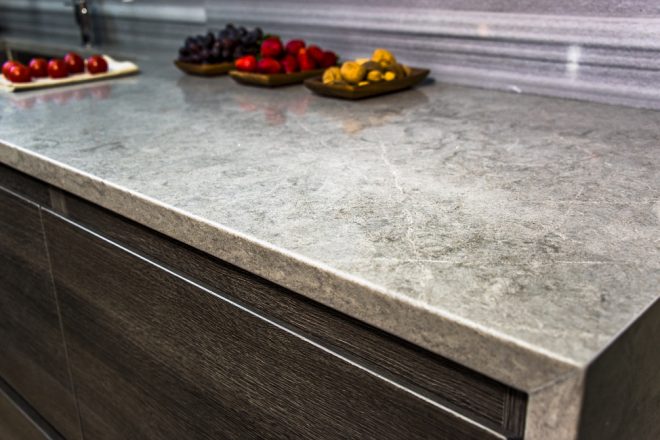
When you are deciding on the appliances and materials to use in your home, you may have a lot of questions: especially when it comes to big ticket items like high quality kitchen marble for countertops. What exactly is marble? Where does it come from? And how do you know if it is the right material for you?
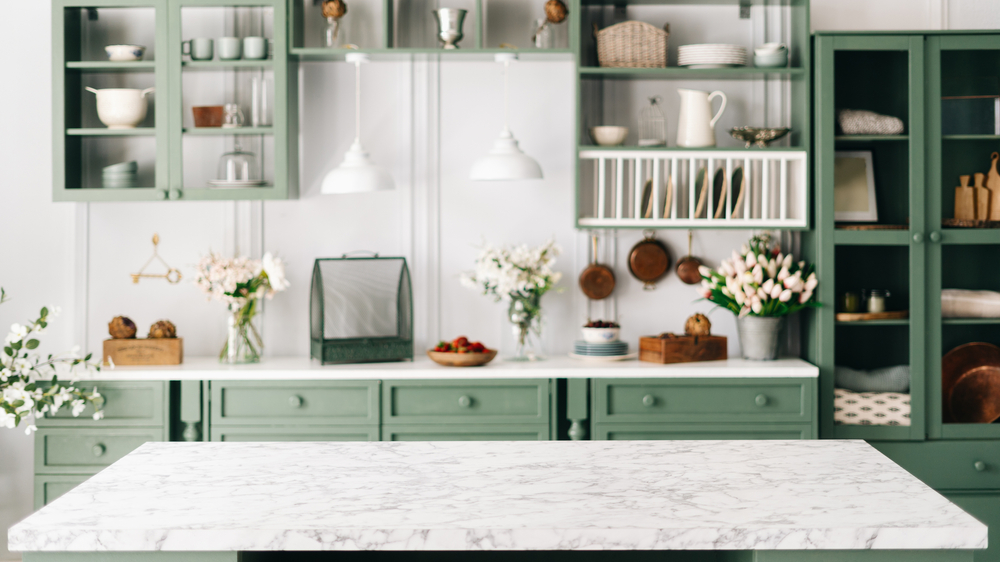
Table of Contents
Marble 101: Learn the Basics
Here are the basics you need to understand before buying marble countertops.
What Makes a Stone Marble?
Marble is a type of metamorphic rock. If you remember back to science class in school, then you may already know the three classifications of rock. For those of us who need to brush up on the topic, here they are again:
- Sedimentary: Sedimentary rocks are made up of an accumulation of small particles called sediment. Over time, these particles settle from the surrounding water or air, and the earth’s pressure forms them into solid rock. Some common sedimentary rocks that are often used in construction include sandstone and limestone.
- Igneous: Igneous rocks are formed by cooling lava. Because of their crystalline nature, igneous rocks are some of the hardest, most durable materials out there. Two igneous rocks, particularly granite and basalt, are frequently used in construction. Granite is a very popular alternative to marble for use in kitchens and bathrooms.
- Metamorphic: Metamorphic rocks happen when already existing sedimentary or igneous rock is changed by a combination of heat, pressure, and minerals from water. This process creates a new, metamorphic rock like marble. Other popular metamorphic rocks used in construction include slate and quartzite.
Where is Marble Sourced?
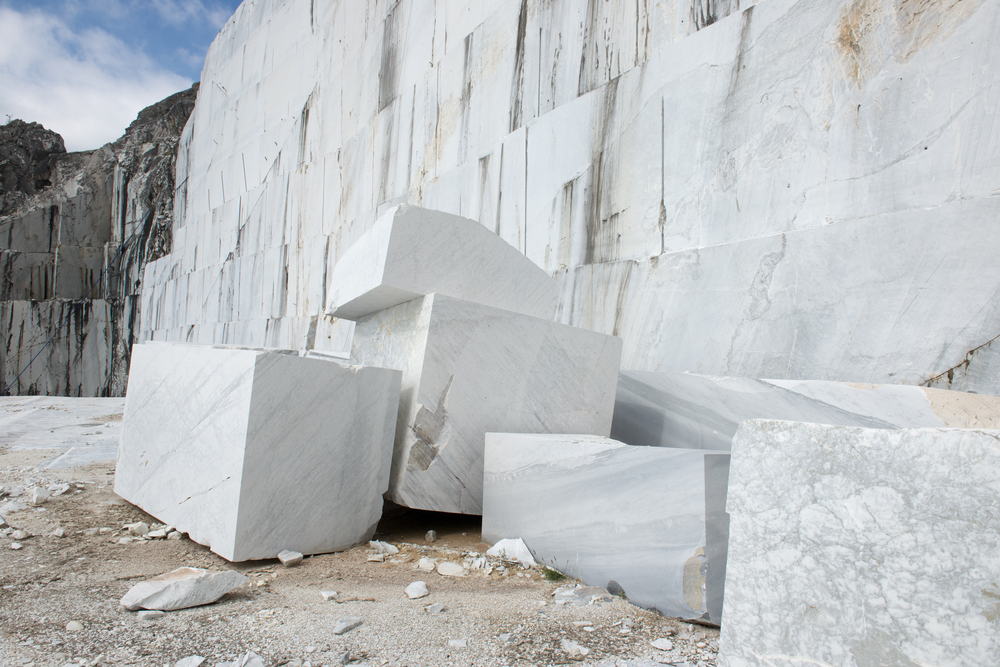
Because metamorphic rocks like marble are formed by intense temperature changes and pressure, they are often located deep in the earth and close to magma. Marble deposits are found around the world, but four countries dominate global marble supply: Italy, China, India, and Spain.
Italian marble is particularly known for its quality–and its price. Italian marble is renowned not only for its strength, but also its beauty. The stone is remarkably free of fissures and faults, making it resilient and visually pleasing. Additionally, Italy was the first country to develop and perfect marble quarrying methods that are still popular today.
That is not to say you cannot find great marble outside of Italy. Other high quality marbles include Grand Antique marble from France, which is a rich black with white veining, and Thassos White Marble from Greece, and Emperador gold marble from Spain.
Marble Vs. Granite: Deciding on Material for Your Countertops
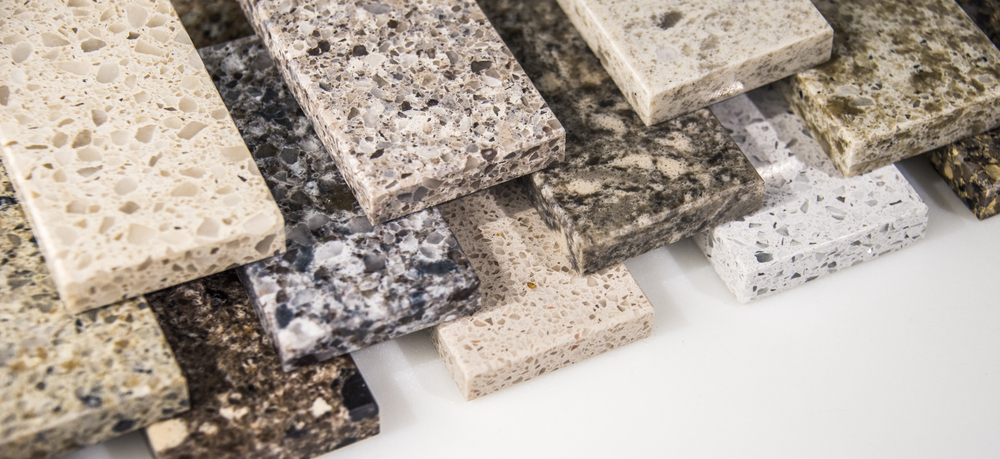
So, now that you know the basics of marble, you may be wondering if marble is right for you. If you are planning to remodel your kitchen or buy a new home, then you need to think seriously about the material used for your countertops. Often, this will mean deciding between marble or granite.
Pros of Granite
Granite tends to be overall cheaper than marble, and is usually lower maintenance. While it can be stained and scratched, it is still a very durable stone that will not show its wear as long as it is well cared for. Granite comes in a wide variety of colors and patterns, and it is usually pretty readily available.
Cons of Granite
For all of its practicality, many feel that granite is just not as pretty as marble. Of course, beauty is subjective, so you can make your own determination. However, know that with granite, the patterns in the stone will tend to be much smaller and more granular than those in marble, largely due to the way in which igneous rock is formed.
Pros of Marble
Because marble is a metamorphic rock formed under intense heat and pressure, it is a great material for kitchen countertops. You can place hot plates, pots, and pans on the surface without worry that you will damage the material.
In addition to its durability, marble offers unparalleled beauty and classic refinement. There is a reason it has been used for thousands of years in palaces and temples. And with so many colors from which to choose, you can find the perfect marble to match the aesthetic of your kitchen.
Cons of Marble
Unfortunately, marble is pretty expensive. This is due to its finite quantity and the difficulty of mining, cutting, transporting, and installing it. Additionally, some types of marble may be more difficult to find or pricy than others due to its quality whether or not its quarry is currently being mined.
Also, although marble is very durable, it is not as low maintenance as granite. To ensure your marble is protected, you need to have it sealed annually to prevent scratches, stains, and other damage that can come from the wear and tear of daily living.
Types of Marble
Now that you know the basics, it is time to get into the fun details. What are the types of marble you can use in your kitchen? What colors and patterns are available? In this section, we will go over some of the most sought after varieties of Italian marble, as well as other popular marbles from around the world used on luxury countertops.
Italian Marble Varieties
Carrara White:
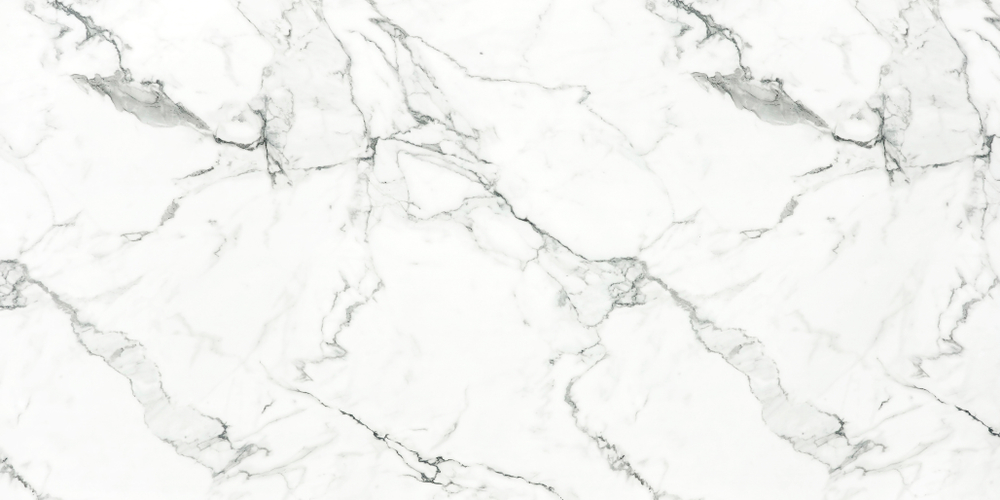
This is the most famous white marble on the market. When you think of marble, chances are you are imagining Carrara White, and it is easy to see why. It is quarried in modern day Tuscany, but has been mined and used ever since the time of the Romans. It is a popular material for everything from sculptures, to buildings to facades, to–yes–kitchen countertops. If you choose Carrara marble for your home, then you are choosing the same material that Renaissance artists Michaelengelo and Donatello used to create some of their most renowned masterpieces.
Carrara white is distinguished by its white color and light gray veining. There are two grades available–the lighter colored and more expensive C grade, and the darker colored and less expensive CD grade. Either type will be durable and beautiful.
Calacatta Vagli:
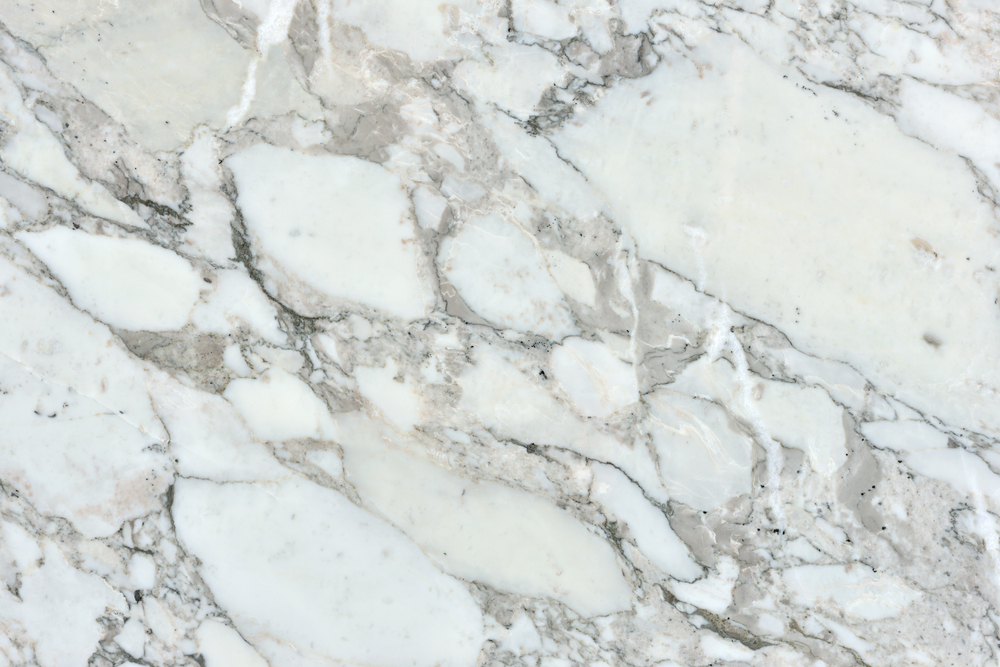
This is a brecciated marble, meaning it is made up of shattered pieces of stone that are then reconstituted through another metamorphic process. You can see this in Calacatta Vagli marble, with its distinct chunks of solid warm-white rock connected with grayish-brown veining. This veining takes on a lustrous, almost gold or bronze tone in some places. This is a great option for those who want an white Italian marble with a warmer tone.
Statuario

Statuario marble looks similar to Carrara White, but the veining is bolder, with thick slashes of gray that are sometimes shot through with thin veins of black and gold. There are two types of Statuario marble: white Statuario Venatino Marble which has thicker veins, and White Statuario Extra Marble, which has thinner veins. Both types are rare and highly in demand.
Other European Marbles
Briefly mentioned earlier, these French, Greek, and Spanish marble varieties are also great options for luxury countertops.
Thassos White Marble
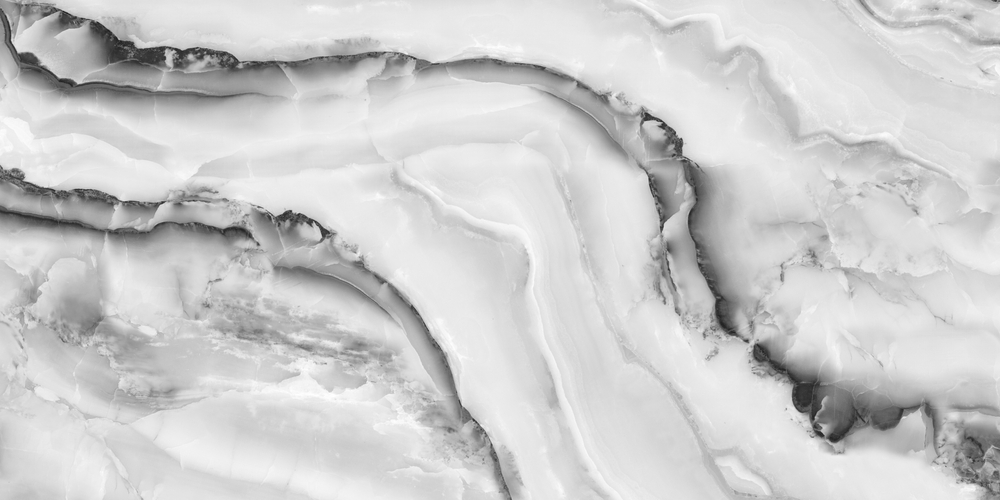
Nearly pure white, this Greek marble is as close to unpatterned as you can get. Thassos White has been quarried since 1987, and makes a great option for those who want a minimalistic, Mediterranean feel in their kitchen.
Grand Antique Marble
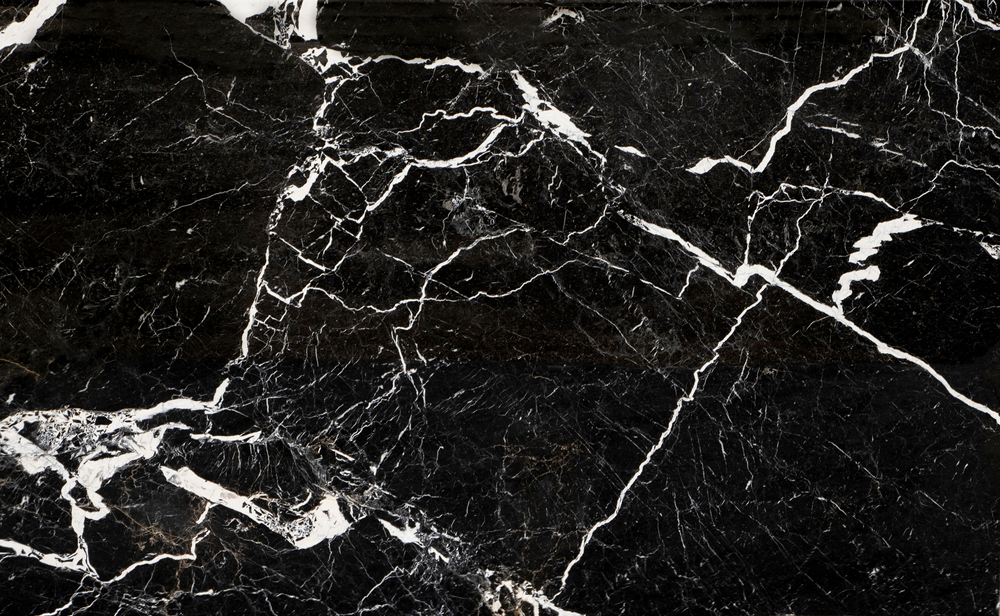
Graphic and bold, this French marble is black with thick bands of white. It is a great choice if you want something striking, non-traditional, and exciting.
Emperador Gold Marble
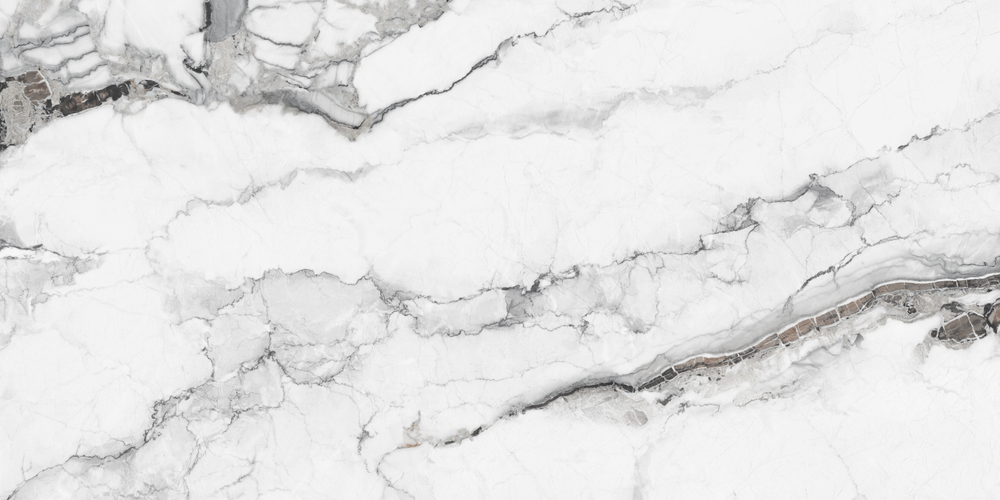
If you want something even warmer and richer than Calacatta Vagli, then consider choosing Spain’s Emperador gold marble. A deep bronze brown, shot through with veins of cream and gold, Emperador is one of the most luxurious looking marbles on the market.
Asian Marbles
Europe is not the only place to find high quality marble. Asian queries in India and China are unearthing unique, stunning stones that are sure to catch your eye.
Green Rainforest Marble
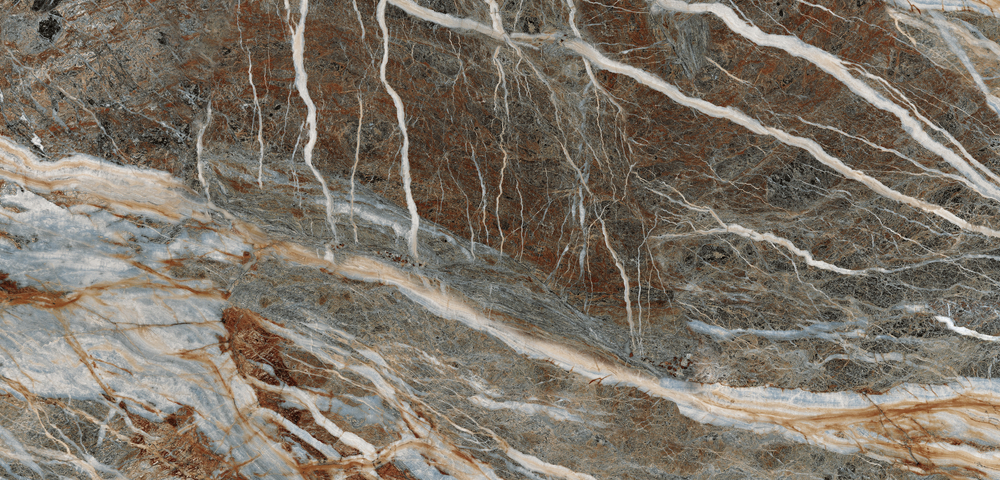
Deep forest green, webbed with a mesh of fine and thick cream, light green, and brown veins–Green Rainforest marble from India looks just like its name suggests. You can bring the sense of a lush jungle into your home with a Green Rainforest marble countertop.
White Beauty Marble
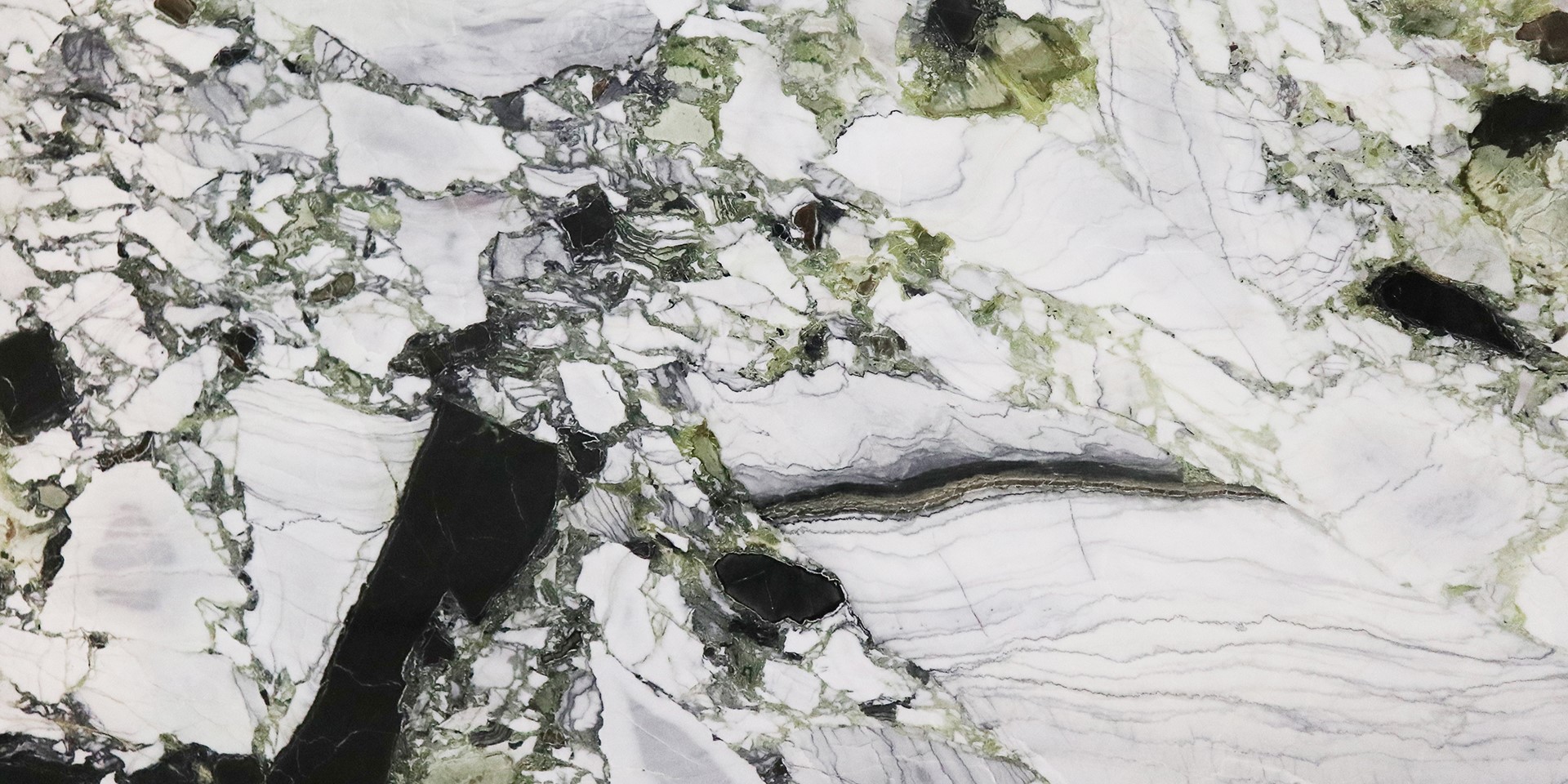
White Beauty marble is a striking stone from Yunnan, China. It is made up of white stone with heavy black, gray, green, and gold veining. With a White Beauty marble countertop, you will be making a bold, fashionable splash in your kitchen.
Mistakes to Avoid When Choosing a Marble Kitchen Countertop
Now that you have a better idea of what kinds of marble countertops are available, here are some of our tips for how to choose the right stone for your kitchen, as well as some advice on pitfalls to avoid.
- Don’t ignore the grade of the stone. Not all marble from the same quarry will be of the exact same quality. Check to make sure you are buying the appropriate quality of stone for use in your kitchen, no matter how beautiful you think it looks.
- Don’t avoid marble maintenance. Marble is a porous stone, meaning it can absorb liquids and suffer damage if not properly maintained. Be sure to clean your countertop with non-acidic solutions, and always get your marble sealed every six months to a year.
- Don’t leave spills on your countertop. Even though marble is durable, it is up to you to keep it in the best quality possible. Always wipe up spills the moment they happen to avoid damaging your counters.
- Don’t avoid lesser known stones. There are a wide variety of marbles available from around the world. If you fall in love with a color or pattern and it meets the quality standards you require, then go for it. Just because it is not Italian marble, does not mean that it is unsuitable for your kitchen. Do your research, and you should be fine.
Keep Reading NewDevRev for Kitchen Design Tips
With these tips in mind, be sure to keep reading New Dev Rev to learn more kitchen remodeling tips and to stay up to date on all of the hottest interior design trends taking over NYC this year.
- Categories:




